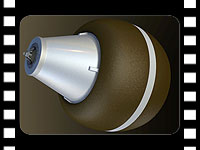TABLE 11-2. Classification of Solid Rocket Motors:
Basis of Classification Examples of Classification
---------------------------------------------------------------------------------------------------------------------------------------------------------------------------------------------------------------------------------------------------------------------------
Application See Table 11-1.
Diameter/Length
Propellant 0.005-6.6 m or 0.2-260 in.; 0.025 to 45 m or 1 to 1800 in.
Composite: Heterogeneous (physical) mixture of powdered
metal (fuel), crystalline oxidizer and polymer binder
Double-base: Homogeneous mixture (colloidal) of two
explosives (usually nitroglycerin in nitrocellulose)
Composite-modified double-base: Combines composite and
double-base ingredients
Gas generator and others: See Chapter 12
Case design
Steel monolithic: One-piece steel case
Fiber monolithic: Filament wound (high-strength fibers) with
a plastic matrix
Segmented: Case (usually steel) and grain are in segments
which are transported separately and fastened together at
launch site
Grain configuration
Cylindrical: Cylindrically shaped, usually hollow
End-burning: Solid cylinder propellant grain
Other configurations: See Figs. 11-16 and 11-17
Grain installation
Case-bonded: Adhesion exists between grain and case or
between grain and insulation and case; propellant is
usually cast into the case
Cartridge-loaded: Grain is formed separately from the motor
case and then assembled into case
Explosive hazard
Class 1.3: Catastrophic failure shows evidence of burning
and explosion, not detonation
Class 1.1: Catastrophic failure shows evidence of detonation
Thrust action
Neutral grain: Thrust remains essentially constant during the
burn period
Progressive grain: Thrust increases with time
Regressive grain: Thrust decreases with time
Pulse rocket: Two or more independent thrust pulses or
burning periods
Step-thrust rocket: Usually, two distinct levels of thrust
Toxicity
Toxic and nontoxic exhaust gases
- Please tell me if you want to see more of these as there are lots of em'. It takes 15 minutes or more for me to post them here, and if no one wants them it is a waste of my time!





 The problem with that would be that they wouldn't generate much thrust due to lower temperatures - Good on Earth, not in space...
The problem with that would be that they wouldn't generate much thrust due to lower temperatures - Good on Earth, not in space...


